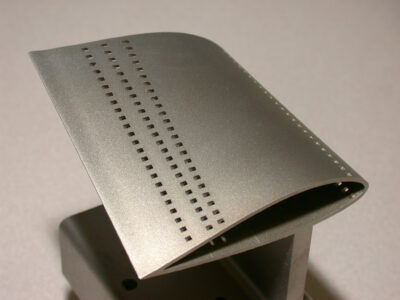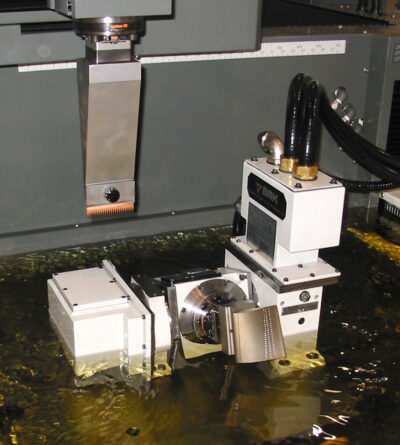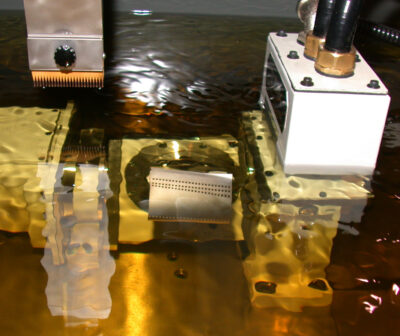
EDM allows aerospace manufacturers to machine complex and precise components from hard-to-machine materials like superalloys, titanium and hardened steels.
Aerospace components often have complex geometries that are difficult or impossible to machine with traditional methods. EDM can create precise shapes with high accuracy, including deep cavities, thin walls and intricate internal structures.
Wire EDM uses a thin, electrically charged wire as a cutting tool, allowing it to produce highly precise and intricate shapes. This capability is crucial for aerospace components that require complex profiles, such as turbine blades, vanes and structural components.
Wire EDM can achieve very tight tolerances, often within microns. This level of precision is essential for aerospace parts that must fit together seamlessly and operate reliably under extreme conditions. Wire EDM is highly effective for producing thin-walled and delicate structures, which are common in aerospace components. The process minimizes mechanical stresses, reducing the risk of deforming these delicate parts during machining. Wire EDM can machine parts with a high aspect ratio (deep cuts relative to the width), which is important for creating components like cooling channels in turbine blades or other parts where space constraints are critical.
Sinker EDM uses a shaped electrode (usually made of graphite or copper) that is precisely machined to match the desired geometry. This electrode is then plunged into the workpiece to erode material and create complex shapes.
Sinker EDM excels at creating deep cavities, pockets and internal geometries that would be difficult or impossible to achieve with traditional machining methods. This capability is essential for producing components like turbine blades, fuel system parts and structural elements with intricate internal features.
Additionally, sinker EDM is often used to produce precision tooling for aerospace manufacturing, including dies, molds and fixtures. These tools must meet exact specifications to ensure that the parts they produce are consistent and reliable. The process is also used to create complex fixture components that hold parts in place during other machining operations, ensuring that the parts remain perfectly aligned and that the final assembly meets the required tolerances.

Machining hard materials and superalloys
Aerospace components are frequently made from tough materials like Inconel, titanium and other superalloys. These materials are chosen for their strength, heat resistance and durability, but are challenging to machine with conventional methods. Since EDM does not involve direct contact between the tool and the workpiece, tool wear is minimal—which is highly advantageous when machining hard materials.

Fine surface finishes
EDM can produce excellent surface finishes, reducing the need for additional finishing processes. This is particularly important for aerospace parts that must meet stringent surface quality requirements to ensure proper function and longevity. Additionally, EDM does not exert mechanical stress on the workpiece, avoiding issues like deformation or work hardening, which can be detrimental in aerospace applications.

Applications in aerospace
EDM is used in many ways, including to machine:
Turbine blades: EDM is used to machine cooling holes in turbine blades, which are often made from nickel-based superalloys. These cooling holes are critical for maintaining blade integrity under high-temperature conditions.
Fuel systems: EDM is used to create precise fuel injector nozzles and other components in fuel systems that require exact flow characteristics.
Landing gear components: Components of landing gear, which often experience high stress, are machined using EDM to ensure durability and reliability.
Engine components: Many engine components, including those in jet engines, are machined using EDM to meet the required high standards of precision and performance.
EDM efficiencies
EDM can efficiently remove material from hard-to-machine alloys and reduce the overall machining time, which is crucial in aerospace manufacturing where time and cost efficiency are important. Both wire and sinker EDM are cost-effective for producing low-volume or custom aerospace components, where the cost of traditional tooling or machining would be prohibitive. Mitsubishi EDMs include EDM automation features that further increase productivity and consistency, reducing lead times for aerospace components.
